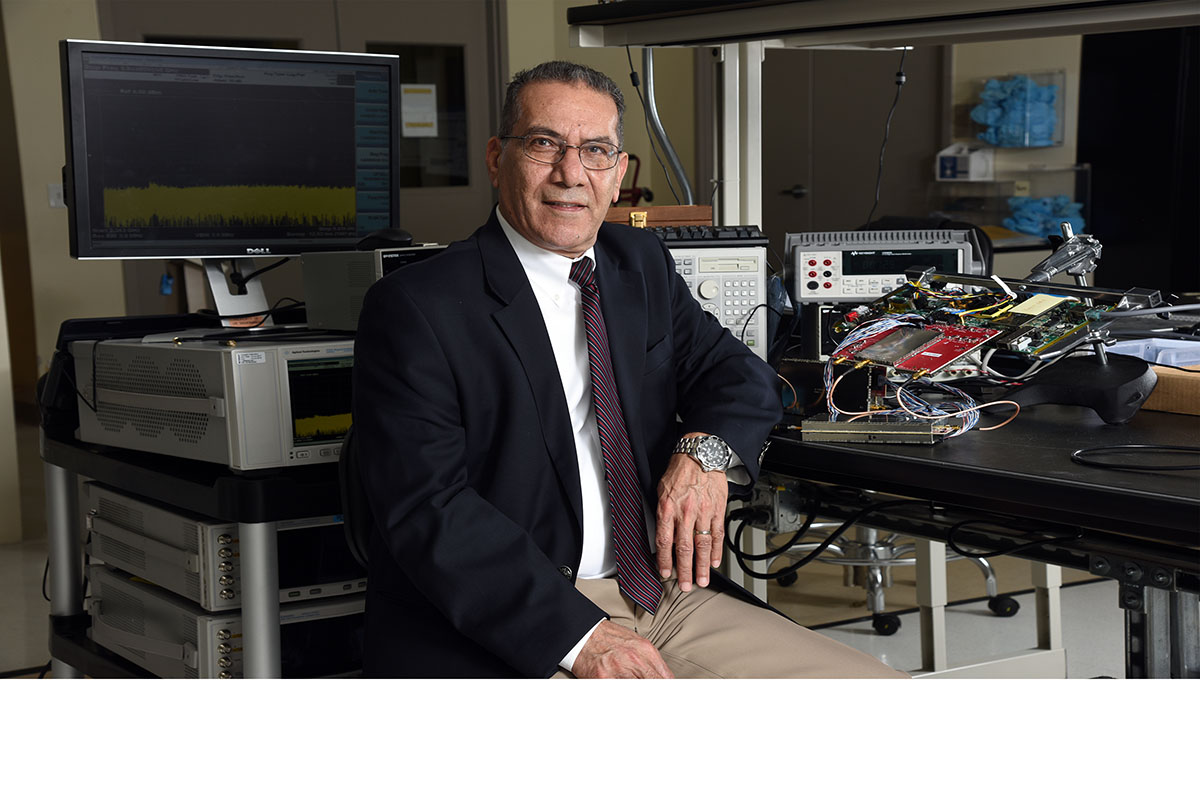Each day, more and more people are going about their routines with a cellphone in hand. Using that phone, they are connected to the world around them, and can gain access to information related to just about any subject, from childcare to home improvement, from navigation systems to the latest political drama. Yet few people ever stop and think about all the signals pinging all over the nation whenever they push a button on their cellphone, or all the research, inventions and technological brilliance that went into the creation of the device they use every day.
Dr. Hussein Moradi has spent most of his career invested in the behind-the-scenes aspects of wireless communication. Formerly employed in the cellphone industry, Moradi joined INL almost nine years ago, and has been working as the chief wireless technical director in National & Homeland Security (N&HS). In April, Moradi was awarded an INL Laboratory Director’s Award as the 2017 Inventor of the Year for his multipart invention, Wireless Spectrum Communication (WSComm), which enables more efficient wireless communication over a wide range of devices and transmission frequencies.
“This was a completely unique invention,” Moradi explained. “We got our first U.S. patent awarded in a year and a half.” Very few patent applications move through the process so quickly. The reason? “There was nothing else like this existing, so nobody could challenge our invention.”
The WSComm invention began as part of the Laboratory-Directed Research and Development (LDRD) program. Working with University of Utah mathematician Professor Behrouz Farhang, who is consulting with INL on WSComm, Moradi developed a wireless communication technology that largely solved the more common problems he learned about from discussions with INL’s customers.
“One of these major problems,” Moradi explained, “is spectrum crunch. Spectrums are a series of frequencies available for communication. Spectrum crunch occurs when lots of people have data they want to transmit using wireless communication, and these frequencies are overfilled. This is sometimes why, for example, you receive text messages long after they were actually sent.”
WSComm allows users to, in Moradi’s analogy, time share their spectrums. One of Moradi’s inventions detects when the primary user of a spectrum is not actively using it. At that point, other users can benefit from the spectrum as well, allowing multiple communications to coexist within the same spectrum.
WSComm is represented on the European Telecommunication Standards Institute (ETSI) 3GPP-5G Standards Committee, which works to develop international standards for fourth- and fifth-generation (4G and 5G) advanced mobile communications. If accepted into the standards by this committee, WSComm will make three key contributions to the 5G partnership for communications. The first one addresses the issue of spectrum resource allocation.
“When one entity wants to transmit data on allocated waveforms, they often have to wait for permission by the basestation, which manages the usage of the spectrum,” Moradi said. “With our technology, spectrums are still allocated to particular users, but other possible users can always listen on those spectrums and transmit data.”
WSComm also creates an enhanced mobile broadband waveform that increases the amount of data transmitted during wireless communication.
In Moradi’s opinion, the most significant modification the team has made is in reducing the amount of power needed for wireless communication to travel a certain distance. “It used to be that we needed about five to 10 watts of power for signals to reach 20 miles away from their point of origin. Now we need less than two watts to reach that same distance. We can also reach a lot more people without needing additional power.”
WSComm and Moradi have strengthened INL’s position as a national leader in wireless research and development and significantly increased INL’s visibility. However, Moradi is not just a pioneer in his WSComm invention, but also in his research operations.
Moradi wants to encourage other aspiring inventors to embrace exceptional goals. He recommends that they should “Stay focused. Dream of impossible things to come.”





